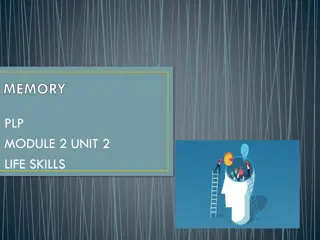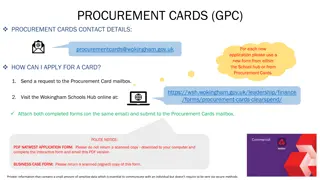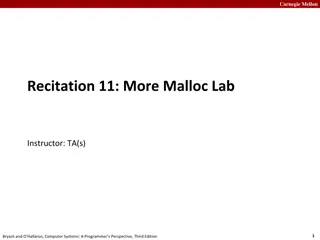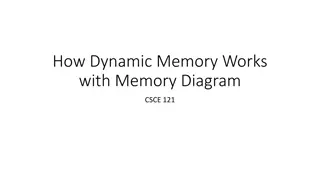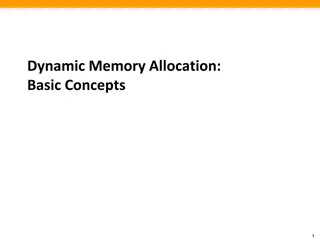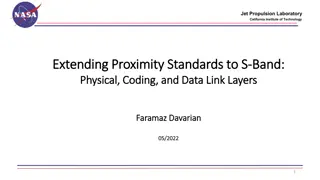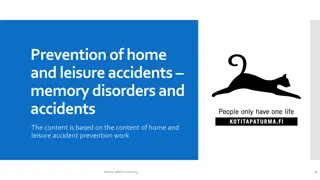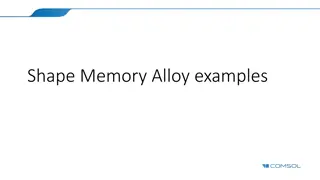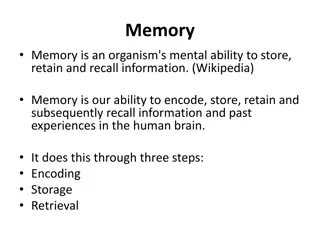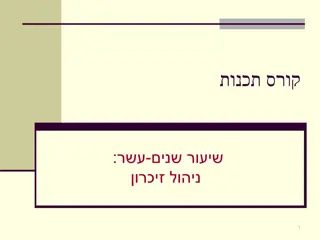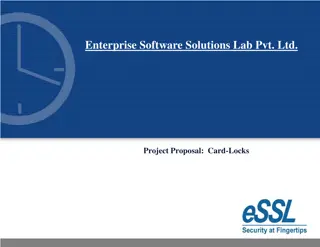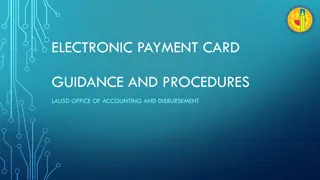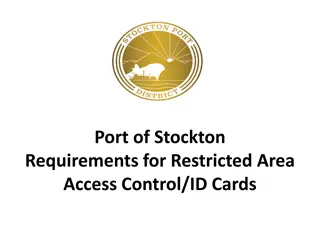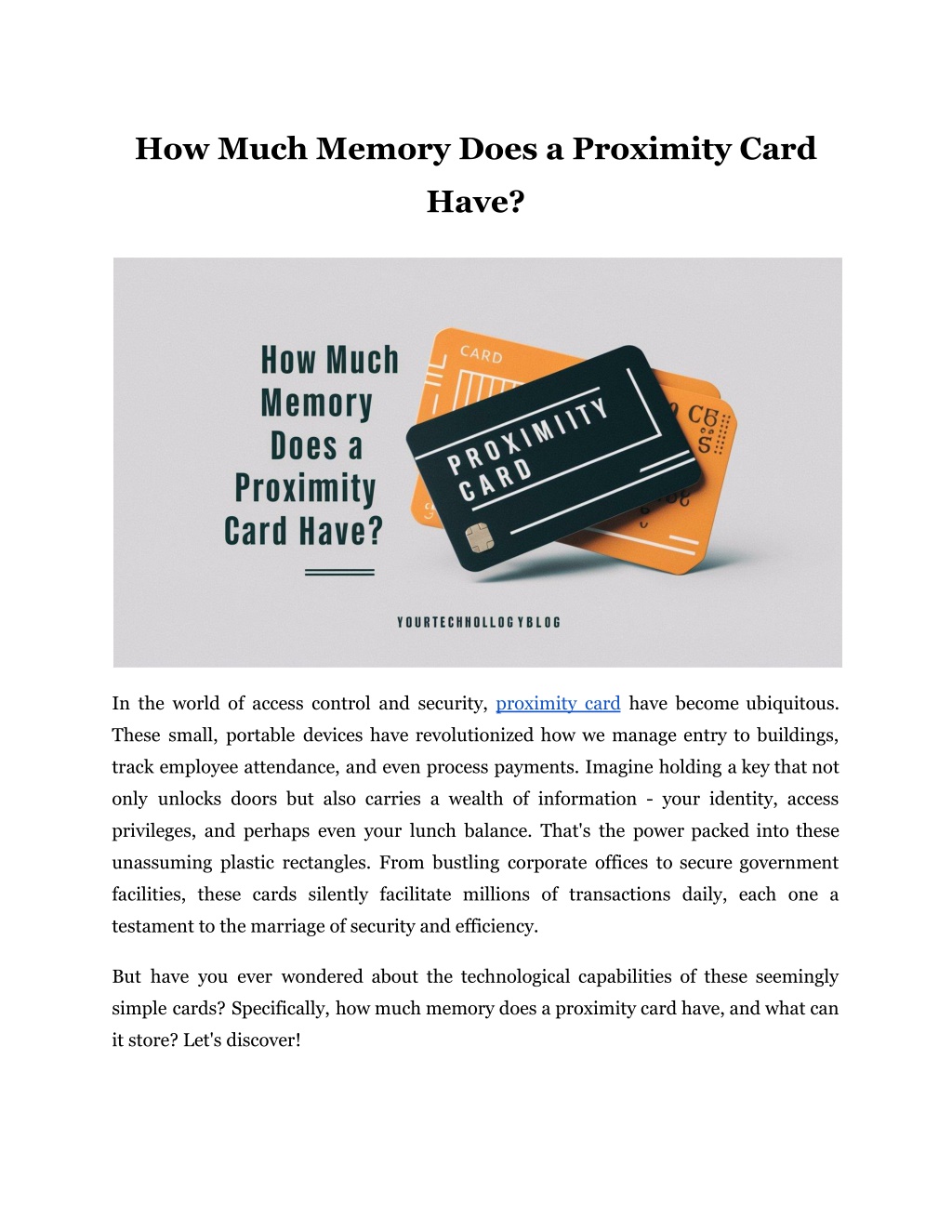
How Much Memory Does a Proximity Card Have?
Discover the memory limits of proximity cards and how they affect security and functionality.
Download Presentation

Please find below an Image/Link to download the presentation.
The content on the website is provided AS IS for your information and personal use only. It may not be sold, licensed, or shared on other websites without obtaining consent from the author. Download presentation by click this link. If you encounter any issues during the download, it is possible that the publisher has removed the file from their server.
E N D
Presentation Transcript
How Much Memory Does a Proximity Card Have? In the world of access control and security, proximity card have become ubiquitous. These small, portable devices have revolutionized how we manage entry to buildings, track employee attendance, and even process payments. Imagine holding a key that not only unlocks doors but also carries a wealth of information - your identity, access privileges, and perhaps even your lunch balance. That's the power packed into these unassuming plastic rectangles. From bustling corporate offices to secure government facilities, these cards silently facilitate millions of transactions daily, each one a testament to the marriage of security and efficiency. But have you ever wondered about the technological capabilities of these seemingly simple cards? Specifically, how much memory does a proximity card have, and what can it store? Let's discover!
Proximity Card Technology Before we get into memory capacity, it's essential to understand how these cards work. Often supplied by a reputable proximity card supplier, they use Radio Frequency Identification (RFID) technology to communicate with card readers. Antenna and Chip: Every card contains a small antenna and a microchip. The antenna, typically a coiled wire, is responsible for receiving and transmitting radio waves. The chip stores the card's unique information and processes the communication with the reader. Passive vs. Active Cards: Most cards are passive, meaning they don't have their own power source. Instead, they're energized by the electromagnetic field emitted by the card reader. Active cards, though less common in access control, contain a battery and can transmit over longer distances. Inductive Coupling: When a passive proximity card comes within range of a reader (usually a few inches), the reader's electromagnetic field induces a small electrical current in the card's antenna. This power activates the chip, which then transmits its stored data back to the reader. Data Modulation: The card's chip modulates (changes) the electromagnetic field to encode its data. The reader detects these changes and decodes them into usable information, such as an ID number. Security Features: Modern proximity cards often incorporate encryption and authentication protocols to prevent unauthorized reading or cloning. The level of security can vary significantly based on the card type and intended use. Read-Only vs. Read-Write: Some cards are read-only, meaning their data is set during manufacturing and can't be changed. Others are read-write, allowing data to be updated or added over time. Read More Articles: Planning the Perfect Cruise Bachelorette Party: Tips and Ideas
Types of Proximity Cards There are several types of proxy cards available in the market, with HID prox card being one of the most popular brands. The memory capacity can vary depending on the type and model of the card. Here's a breakdown of common types: Low-Frequency (125 kHz) Cards: Examples: HID proximity cards, EM4100 Typically used for basic access control High-Frequency (13.56 MHz) Cards: Examples: MIFARE Classic, MIFARE DESFire Offer higher security and more memory Ultra-High Frequency (860-960 MHz) Cards: Used for long-range applications Can store more data but are less common in access control Image Idea Memory Capacity of Prox Cards The memory capacity of prox cards can vary significantly based on the technology used. Here's a general overview: Card Type Frequency Typical Capacity Memory Low-Frequency (e.g., HID ProxCard II) 125 kHz 26-40 bits MIFARE Classic 13.56 MHz 1KB - 4KB MIFARE DESFire 13.56 MHz 2KB - 8KB
UHF Cards 860-960 MHz Up to 8KB or more It's important to note that the memory capacity mentioned above refers to the total memory of the card. However, not all of this memory is always available for user data, as some are reserved for security features and card management. Low-Frequency Cards: Basic but Efficient Low-frequency cards, like the standard HID prox card, typically have very limited memory. These cards usually store: A unique identification number (usually 26-40 bits) Facility code (to identify the organization) Despite their limited memory, these cards are sufficient for most basic access control needs. They're cost-effective and widely used in many organizations. High-Frequency Cards: More Memory, More Possibilities High-frequency cards offer significantly more memory and enhanced security features. For example: MIFARE Classic cards can store 1KB to 4KB of data MIFARE DESFire cards can have up to 8KB of memory This increased capacity allows for more sophisticated applications, such as: Storing biometric data Multi-application use (access control, cafeteria payments, etc.) Enhanced encryption for better security
The Role of Memory in Card Functionality The amount of memory a Proxy card has directly impacts its functionality and potential applications. Here's how: Basic Access Control: Even cards with minimal memory (like 26-bit proximity cards) can handle basic access control functions effectively. Multi-Application Cards: Cards with more memory can support multiple applications, such as access control, time and attendance, and cashless vending. Biometric Data Storage: Higher memory capacities allow for storing biometric templates directly on the card, enhancing security. Enhanced Security Features: More memory enables the implementation of advanced encryption and authentication protocols. Read More Articles: Planning the Perfect Mexico Bachelorette Party: Tips and Ideas Choosing the Right Card for Your Needs When selecting proxy cards for your organization, consider: Required Applications: Do you need just access control or multiple functions? Security Level: Higher memory cards often offer better encryption options. Compatibility: Ensure the cards work with your existing or planned card readers. Scalability: Consider future needs it might be worth investing in cards with more memory for future applications. The Future of Proximity Card Memory As technology advances, we're seeing trends towards: Increased Memory Capacity: Newer cards are offering even more storage space.
Enhanced Security Features: More memory allows for more sophisticated encryption. Integration with Smartphones: NFC technology is bridging the gap between physical cards and mobile devices. Takeaway The memory capacity of a proximity card may seem like a small detail, but it plays a crucial role in determining the card's capabilities and applications. From basic HID prox cards with minimal memory to sophisticated high-frequency cards with kilobytes of storage, the range of options enables organizations to choose the right solution for their specific needs. Remember, the right card is not always the one with the most memory, but the one that best fits your organization's current and future needs. At Bristol ID Technologies, we don't just supply cards we empower businesses with cutting-edge access control solutions. As industry leaders in prox card technology, we understand that every bit of memory matters when it comes to securing your premises and streamlining your operations. Site Article: How Much Memory Does a Proximity Card Have















